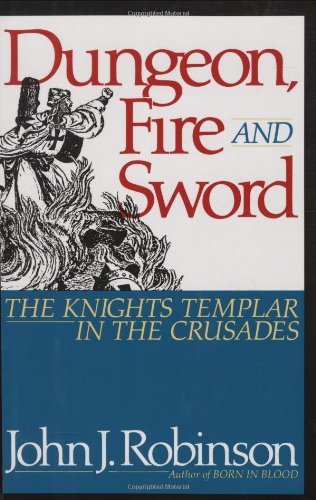
It’s amazing how much your taste in literature can change in 20 years. When I first read John J. Robinson’s Dungeon, Fire and Sword: The Knights Templar in the Crusades when it first came out in around 1992, I thought it was the greatest thing ever. What’s not to like: war, adventure, chivalry, deceit, corruption, conspiracy, religious conflict on the grand stage of history, and all true.
Today, its ponderous, filled with political and battle detail that seems extraneous to the actual history of the Templars, and just not very well written. Years ago I gave this book as a gift to people who were interested in the medieval world. I couldn’t do that today.
That said, a detailed history of the crusades is worth reviewing for a few reminders:
- It was never really about religion, although it was certainly sold that way. It was about siphoning off second and third sons from Western Europe and sticking it to the Byzantines.
- By the end, the Christian crusader states were perfectly happy with peace with their Muslim neighbors, because everyone was making a nice living from trade with the East. But people get greedy and warlike.
- It’s not just about Christians and Muslims. The Sunni-Shi’a divide made the early Crusades possible, and the appearance of the Mongols briefly prolonged the shrinking Crusader states.
- It is a crime that the Battle of Ain Jalut (linked above) gets zero coverage in most history reviews of the period.
- In a world where strength was right, I still find it fascinating that the powers of the day, including King Philip of France and Pope Clement, went through such amazingly circuitous proceedings to get the Templars disbanded and take their stuff. Even in 1300s Europe, where torture, rape and murder were the political norm, it was somehow important to make the whole thing look legit.